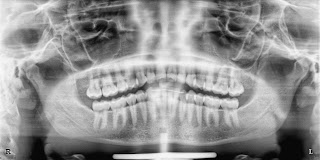Digital Dental Radiography
Digital Dental Radiography has been around since the late 1980's. When compared to conventional x-rays, digital x-rays have many benefits.
- They are more environmentally friendly, as there are no toxic chemicals to dispose of and they produce no waste.
- It provides instant imaging. There s no developing process which saves time for both the patient and health professional.
- The digital images can be shared more easily with another health professional, saving the patients' time and money in the form of duplication charges.
- Storage, organization, stability and ease of chronological comparisons of past radiographs are also great advantages of digitalization.
- The most important feature of digital radiography is the significant 80-90% reduction of radiation required to produce an image.
According to the National Council on Radiation Protection, we are all exposed to background radiation on average about 300 mrem per year. (A unit of radiation is measured in rem, and there are 1000 millirem per rem.)
- 228 mrem breathing
- 28 mrem eating and drinking food
- 30 mrem cosmic radiation
- 25 mrem airport x-ray
- 21 mrem the ground an surrounding buildings
- 10 mrem cooking with natural gas
- 2 mrem sleeping next to someone
So how much exposure are you really getting from digital x-rays?
- 0.4 mrem - one digital dental radiograph
- 1.6 mrem check-up x-rays (4 bitewings)
- 7 mrem - complete full mouth series of 18 digital x-rays (taken every 3-5 years)
- 1.5 mrem - a panoramic radiograph
Given these numbers, one can see that digital dental x-rays are very safe and expose you to less radiation than just breathing and well below the limits established by the EPA.
In light of this information, forgoing dental x-rays is ill-advised. Waiting until one has pain before consenting for a radiographic examination, more often than not, results in the need for a much more costly procedure than had the problem been diagnosed sooner. So help yourself. Allow your dentist to take radiographs and be your dental heath professional.




Comments
Post a Comment